Related Research Articles

American Motors Corporation was an American automobile manufacturing company formed by the merger of Nash-Kelvinator Corporation and Hudson Motor Car Company on May 1, 1954. At the time, it was the largest corporate merger in U.S. history.
Rambler is an automobile brand name that was first used by the Thomas B. Jeffery Company between 1900 and 1914.

Charles Williams Nash was an American automobile entrepreneur who served as an executive in the automotive industry. He played a significant role in building up General Motors as its 5th President. In 1916, he bought Thomas B. Jeffery Company, makers of the popular Rambler automobile, and renamed it Nash Motors. The resulting firm played an independent role in an automobile industry increasingly dominated by the Big Three: General Motors, Ford, and Chrysler.

Nash Motors Company was an American automobile manufacturer based in Kenosha, Wisconsin from 1916 until 1937. From 1937 through 1954, Nash Motors was the automotive division of the Nash-Kelvinator Corporation. As sales of smaller firms declined after 1950 in the wake of the domestic Big Three automakers’ advantages in production, distribution, and revenue, Nash merged with Hudson Motors to form American Motors Corporation (AMC). Nash automobile production continued from 1954 through 1957 under AMC.
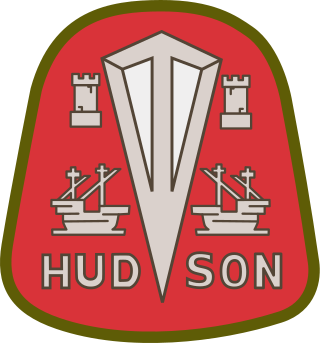
The Hudson Motor Car Company made Hudson and other branded automobiles in Detroit, Michigan, U.S., from 1909 until 1954. In 1954, Hudson merged with Nash-Kelvinator to form American Motors Corporation (AMC). The Hudson name was continued through the 1957 model year, after which it was discontinued.
Kelvinator was an American home appliance manufacturer and a line of domestic refrigerators that was the namesake of the company. Although as a company it is now defunct, the name still exists as a brand name owned by Electrolux AB. It takes its name from William Thomson, 1st Baron Kelvin, who developed the concept of absolute zero and for whom the Kelvin temperature scale is named. The name was thought appropriate for a company that manufactured ice-boxes and refrigerators.
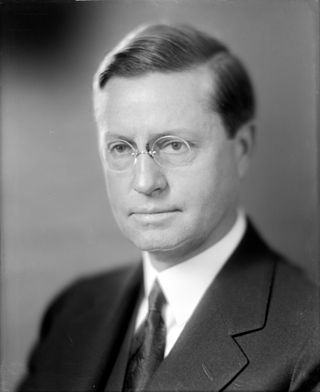
Roy Dikeman Chapin Sr. was an American industrialist and a co-founder of Hudson Motor Company, the predecessor of American Motors Corporation. He also served as the United States secretary of commerce from August 8, 1932, to March 3, 1933, during the final months of the administration of President Herbert Hoover.
The Studebaker-Packard Corporation is the entity created in 1954 by the purchase of the Studebaker Corporation of South Bend, Indiana, by the Packard Motor Car Company of Detroit, Michigan. While Studebaker was the larger of the two companies, Packard's balance sheet and executive team were stronger than that of the South Bend company.

The Jeffery brand of automobiles were manufactured by the Thomas B. Jeffery Company in Kenosha, Wisconsin.

The Nash Ambassador is a luxury automobile that was produced by Nash Motors from 1927 until 1957. For the first five years it was a top trim level, then from 1932 on a standalone model. Ambassadors were lavishly equipped and beautifully constructed, earning them the nickname "the Kenosha Duesenberg".

The Nash Rambler is a North American automobile that was produced by the Nash Motors division of Nash-Kelvinator Corporation from 1950 until 1954 in sedan, wagon, and fixed-profile convertible body styles.

The Hudson Hornet is a full-size car manufactured by Hudson Motor Car Company of Detroit, Michigan from 1951 until 1954, when Nash-Kelvinator and Hudson merged to form American Motors Corporation (AMC). Hudson automobiles continued to be marketed under the Hudson brand name through the 1957 model year.

The Hudson Italia is an automobile styling study and a limited production two-door compact coupé that was produced by the Hudson Motor Car Company of Detroit, Michigan, in cooperation with Carrozzeria Touring of Italy, and subsequently marketed by American Motors Corporation (AMC) during the 1954 and 1955 model years.

Roy Dikeman Chapin Jr. was the chairman and chief executive officer of American Motors Corporation (AMC). Chapin's father, Roy D. Chapin Sr., was one of the co-founders of the Hudson Motor Car Company; Hudson later merged with Nash-Kelvinator Corporation in 1954 to form American Motors. Roy D. Chapin Jr. was instrumental in introducing many successful lines of cars by American Motors that included the Gremlin, Hornet, and Javelin, as well as the purchase of Kaiser Jeep by the automaker.

Abraham Edward Barit was an American industrialist who served as the president and CEO of the Hudson Motor Car Company from 1936 to 1954 when Hudson merged with Nash Motors to form American Motors Corporation (AMC). Barit served on the board of AMC following the merger of the two automakers.
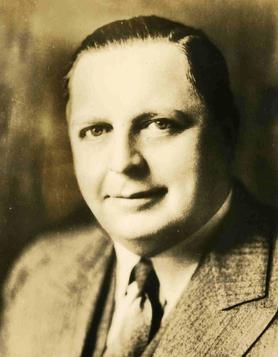
George Walter Mason was an American industrialist. During his career Mason served as the Chairman and CEO of the Kelvinator Corporation (1928-1937), Chairman and CEO of the Nash-Kelvinator Corporation (1937-1954), and Chairman and CEO of American Motors Corporation (1954).
Edmund E. Anderson was an automotive designer in the North American automotive industry at General Motors and notably as the lead designer for American Motors Corporation (AMC) from 1950 to 1961.
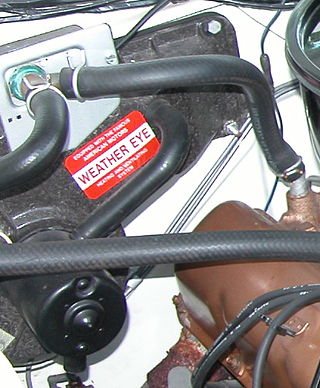
The Weather Eye was a trade name for a Nash Motors-designed fresh-air system for automobile passenger compartment heating, cooling, and ventilating. The Nash "All-Weather Eye" was the first automobile air conditioning system for the mass market. The use of the Weather Eye name for automobile passenger heating and air conditioning systems continued in American Motors Corporation (AMC) vehicles.
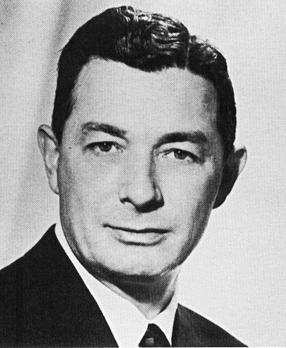
Richard Eugene Cross (1910-1996) was an American business executive in the automotive industry, a lawyer, and a civic leader.
The Leonard Company was founded in 1881 by Charles H. Leonard in Grand Rapids, Michigan.
References
- 1 2 3 "Encyclopedia of Detroit: Kelvinator Corporation". Detroit Historical Society. 2023. Retrieved 22 April 2023.
- ↑ Adler, Dennis (2004). Fifties Flashback: The American Car. Motorbooks International. p. 103. ISBN 9780760319277 . Retrieved 22 April 2023– via Google Books.
- ↑ Mays, James (16 November 2020). "Nash-Kelvinator 1937: A healthy new company Chapter 1 of A Car and a Refrigerator Go to War: Nash-Kelvinator in World War II". allpar.com. Retrieved 22 April 2023.
- ↑ Peck, Merton J.; Scherer, Frederic M. (1962). The Weapons Acquisition Process: An Economic Analysis. Harvard Business School. p. 619.
- ↑ "In which we serve freedom (advertisement)". Life. Vol. 15, no. 23. 6 December 1943. pp. 52–53. Retrieved 22 April 2023– via Google Books.
- 1 2 Hyde, Charles K. (2009). Storied Independent Automakers: Nash, Hudson, and American Motors. Wayne State University Press. pp. 68–76. ISBN 9780814334461 . Retrieved 22 April 2023.
- ↑ "1952 Kelvinator Food-A-Rama Side by Side Refrigerator". antiqueappliances.com. Archived from the original on 22 January 2004. Retrieved 20 April 2013.